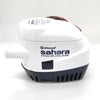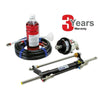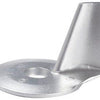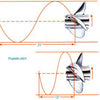Selecting the Right Prop
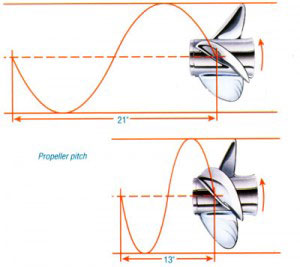
Selecting the Right Prop
The size of a propeller is defined with two sets of numbers, diameter and pitch, with pitch always following the diameter.
Diameter
The diameter is two times the distance from the center of the hub to the tip of the blade. It can also be looked at as the distance across the circle that the propeller would make when rotating.
Choose the Right Prop for Your Boat
Pitch, the second number listed in the propeller description, is defined as the theoretical forward movement of a propeller during one revolution. Since there is almost always a small amount of "slip" between the propeller and the water, the actual distance travelled is slightly less.

Cupping
Many of today's propellers incorporate a cup at the trailing edge of the propeller blade. This curved lip on the propeller allows it to get a better "bite" on the water, resulting in reduced ventilation and slipping, and allows for quicker acceleration, or "hole shot," in many cases. A cupped propeller also works well in applications where the motor can be trimmed so that the propeller is near the surface of the water. The cup will also typically result in a higher top end speed.
Some Problems to Avoid
Ventilation
Ventilation occurs when surface air or exhaust gasses are drawn into the propeller blades. When this happens, boat speed is lost and engine r.p.m. climbs rapidly. This can result from excessively tight cornering, a motor that is mounted very high on the transom, or by over-trimming the engine.
Cavitation
Cavitation (which is often confused with ventilation) is a phenomenon of water vaporizing or "boiling" due to the extreme reduction of pressure on the back of the propeller blade. Many propellers partially cavitate during normal operation, but excessive cavitation can result in physical damage to the propeller's blade surface due to the collapse of microscopic bubbles on the blade. There may be many causes of cavitation, such as incorrect matching of propeller style to application, incorrect pitch, physical damage to the blade edges, water flow obstruction caused by parts of the boat’s hull or running gear to close to t the propeller and others.


